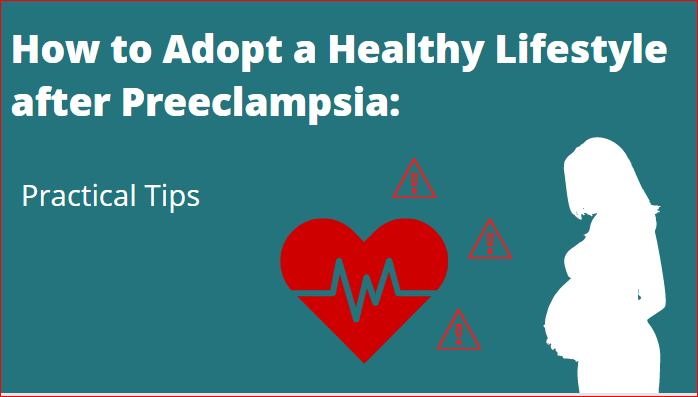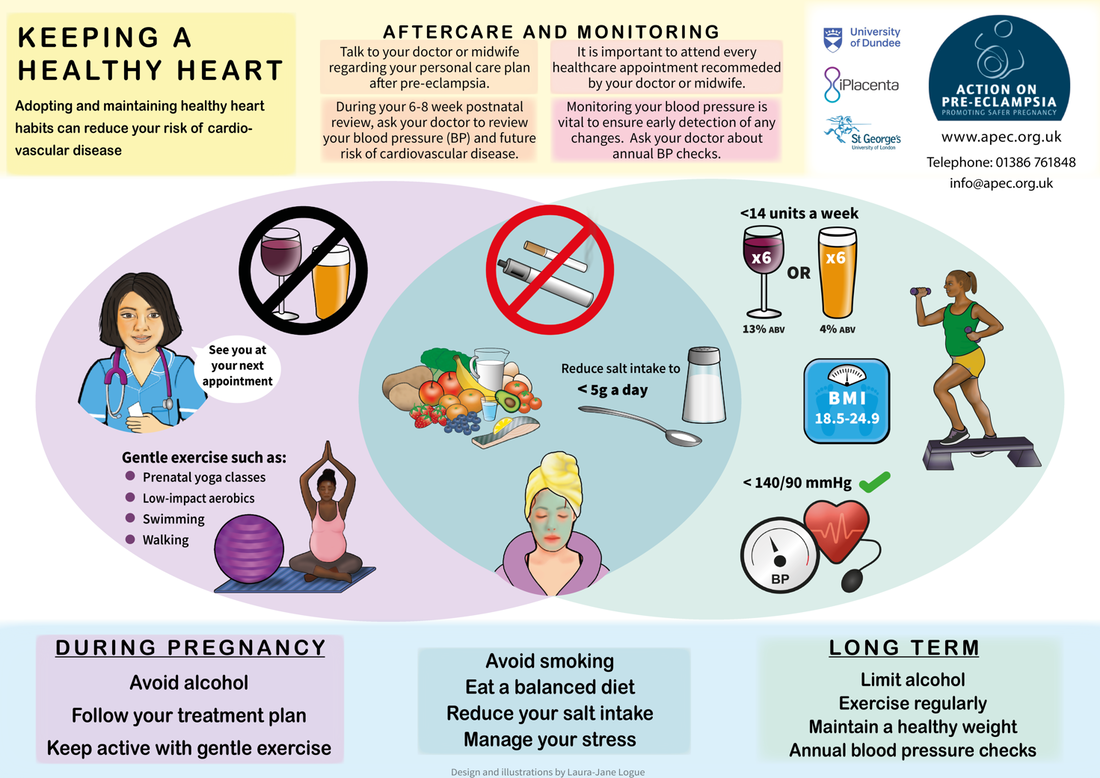Practical TipsVeronica Giorgione is studying the long-term effects of preeclampsia on the cardiovascular system. In her job, she meets and counsels mothers who have just had preeclampsia. Here is a summary of the advice she usually gives: Preeclampsia is a disorder of pregnancy that can affect pregnant women, usually during the second half of pregnancy or soon after their baby is delivered. It is characterized by high blood pressure and signs of damage to another organ system such as liver and kidneys. The signs of preeclampsia go away after delivery and the majority of these women achieve a full recovery. Usually, a clinical improvement starts within one to two days following the delivery and blood pressure goes down to normal pre-pregnancy values within one to eight weeks. Women who have had preeclampsia are at an increased risk of developing cardiovascular diseases (CVD) later in life (1). CVD are disorders affecting heart or blood vessels, such as high blood pressure, heart attack or stroke. However, most CVD are preventable by adopting a healthy lifestyle. In particular women with a history of preeclampsia can reduce their cardiovascular risk by leading a healthier lifestyle. An active and healthy lifestyle Acknowledgment: We would like to thank Laura-Jane Logue and Marcus Green from Action on Preeclampsia for allowing me to use this illustration. An active and healthy lifestyle is based on the following advice that can help people to feel better every day and prevent CVD on the long run.
References:
Author6/4/2021 03:26:03 am
Great content!! So, much informative content you produce high quality of content which is good for those people can possibly visit your site. It same as Haarlem Oil and Haarlem Oil for Human (www.horses-haarlem-oil.com/product-category/shop) made by French people in France. I love the journey of my research from this website. Hope you do more blog post here about health. Thank you and God bless.
Reply
12/4/2021 10:11:02 am
Hey Veronica,
Reply
9/6/2021 10:13:45 am
Thank you for sharing this very informative content I read a lot of importance's to live longer by taking self care by drinking food supplements daily. I also recommend Genuine Haarlem Oil made from France. It can help to boost your immune system to fight against viruses.
Reply
14/2/2022 10:02:00 am
Great article source to read. Thank you for sharing this.
Reply
21/10/2022 08:09:22 pm
click on the given link to read more such post. https://getblogour.com/lifestyle/
Reply
26/11/2022 05:26:32 am
Very nice… I really like your blog as well as website. Very useful information and worth reading. Thanks
Reply
17/12/2022 11:14:55 am
I think that is among the so much important information for me. And I am glad to study your article. However should remark on a few basic things, The website taste is perfect, and the articles are really nice: D. Excellent task, cheers
Reply
25/12/2022 11:42:05 am
Its very helpful and informative article. Thank you I placeta for this article.
Reply
14/6/2023 07:54:16 am
I am veritably pleased with your blog because the composition you wrote is veritably original and conclusive for new compendiums .
Reply
7/7/2023 09:39:53 am
Fantastic article. Thank you for sharing. For individuals like me who are finding out about computerized monetary standards, it is extremely useful. I anticipate perusing a greater amount of your supportive substance.
Reply
7/7/2023 10:02:40 am
Fantastic article. Thanks you for sharing. For individuals like me who are finding out about computerized monetary standards, it is extremely useful. I anticipate perusing a greater amount of your supportive substance.
Reply
5/12/2023 06:58:58 pm
Click On The Given Link To Read More Such Post.
Reply
Clinck O The Given Link To Read More Such Post.
Reply
7/2/2024 07:33:51 am
Dua for students is a special prayer that is recited by students to seek blessings and guidance from Allah. This dua is deeply rooted in Islamic teachings, and it is believed to invoke divine assistance in the academic pursuits of students.
Reply
Leave a Reply. |
About the blogBeing a PhD student in a European training network is a life-changing adventure. Moving to a new country, carrying out a research project, facing scientific (and cultural) challenges, travelling around Europe and beyond… Those 3 years certainly do bring their part of new - sometimes frightening - but always enriching experiences. Categories
All
Archives
December 2021
|




 RSS Feed
RSS Feed

27/5/2020
19 Comments